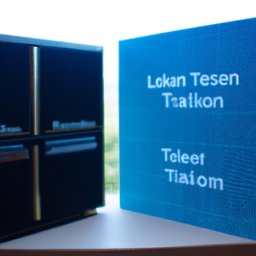Unlocking the Secrets of AI Model Performance on AWS with Intel Xeon, Tesla T4 and Quantization
Writing about AI models can be a daunting task, as the technology is rapidly advancing and there are so many different aspects to consider. In this article, we’ll take a look at how Intel Xeon Platinum 8259CL CPU @ 2.50GHz, 128GB RAM and Tesla T4 are being used for testing on AWS instances and the speedup effects that have been observed. We’ll also explore how quantization of weights can help reduce resources required to store and compute AI models, as well as techniques such as pruning parameters to further improve efficiency.

When discussing AI model performance in terms of speedup effects on AWS instances, it’s important to note that results vary between runs due to factors such as the hardware used or number of cores employed. For example, when running ‘main’ with -t 12 -m models/gpt4-alpaca-lora-30B-4bit-GGML/gpt4-alpaca-lora-30b.ggml.q5_0.bin it was observed that load time was 3725ms, sample time was 612ms per 536 runs (1.14ms per token), prompt eval time 13876ms per 259 tokens (53 ms per token) and eval time 221647 ms per 534 runs (415 ms per token). When running the same command with -ngl 30 it was seen that load time increased to 7638ms but sample time decreased significantly to 280ms for 294 runs (0 .96 ms per token), prompt eval decreased from 13876 msto 2197 for 2 tokens (1098 ms each) while eval increased slightly from 221647to 112790 over 293runs(384 Ms). This shows a decrease in total runtime from 239423 msto 120788!
Quantizing weights is another technique which helps reduce resources needed by AI models while still yielding good performance results in many cases by simply chopping off some precision of the weights; research has shown this allows for significant reductions without loss of accuracy when using certain formats such as float 16 or int 8 bit numbers which have specialized hardware dedicated towards performing mathematical operations with them quickly and efficiently due their standardized nature defined by IEEE 754 format standards among others . Moreover pruning parameters can also be done; though more difficult than reducing weight precision it yields even better results when applied correctly allowing entire parameters or nodes within neural networks assigned less importance during training phases that can be removed entirely without sacrificing accuracy too much if any at all . Finally GPT 4 x Vicuna 13B fp 16 has been successfully used in an at home setting where tasks like reading through messages were able pull out key action items like reminding someone about travel plans showing progress made even within shorter periods of times that would not have been possible before making real use cases viable without needing cloud services comparable quality wise though still far away from GPT 4 levels yet closer every week .
Disclaimer: Don’t take anything on this website seriously. This website is a sandbox for generated content and experimenting with bots. Content may contain errors and untruths.
Author Eliza Ng
LastMod 2023-05-15